The Tang Dynasty five-stringed pipa who traveled eastward to Japan witnessed the karma of the two cultures
In the special exhibition "The World of Shoso-in" at the Tokyo National Museum, a five-stringed pipa from the Tang Dynasty is the most eye-catching. This pipa, which has been passed down for thousands of years, was only displayed because of the handover of the throne; it is also a cultural relic from China, which has witnessed the unique cultural relationship between China and Japan. Surrounding it, there are still many mysteries: what caused this lute to leave China and collect it in Shoso-in, Japan? What is the difference between the five-stringed lute and the four-stringed lute? What does the pattern of the Hu people riding camels on the pipa tell us? The five-stringed pipa is extremely rare today, so what was its status in the Tang Dynasty?
A lute that traveled eastward to Japan
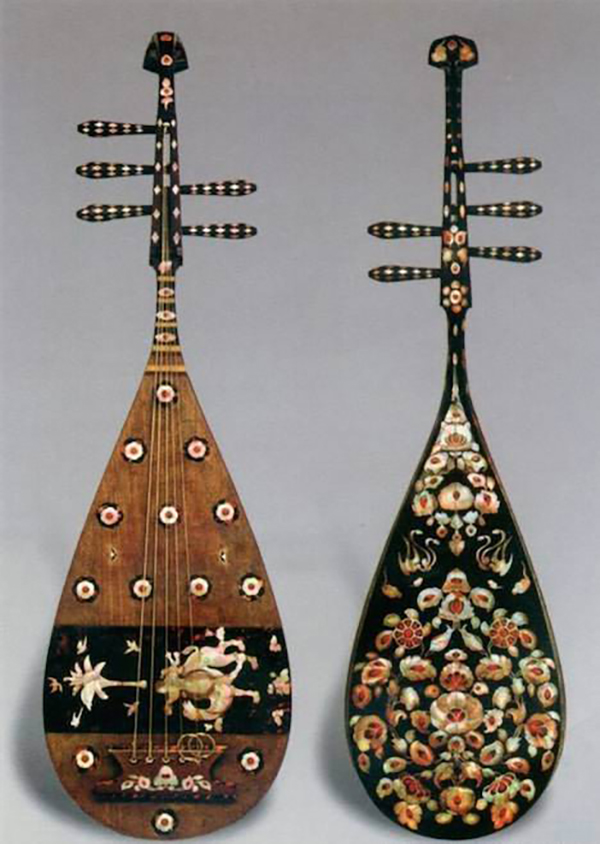
Luodian red sandalwood five-string pipa
The official name of this pipa is "Luotian Red Sandalwood Five-String Pipa", and the Shoso-in, which houses this pipa, is a special treasure house of the Japanese royal family. The appearance of "Shosoin Treasures" is closely related to the famous empress in Japanese history, Empress Guangming. Empress Guangming is the wife of the 45th emperor of Japan, Emperor Shomu, and the first queen in Japanese history who is not from a royal family. At this time, plagues in Japan continued, disasters were frequent, and the people were struggling. Emperor Shomu and Empress Guangming used Buddhism as a tool to rule the country. They pooled human and financial resources to build Buddhist temples and used them as places for social relief. The famous Great Buddha of Todaiji Temple and the temple complex in the surrounding area were built under the impetus of Emperor Shomu and Empress Guangming. After the death of Emperor Shengmu, Empress Guangming acted in power. During this period, a large number of royal treasures were enshrined in front of the Buddha several times, and they were deposited in Todaiji in the name of praying for Emperor Shengmu. The place where Todai-ji Temple used to store these treasures is Shoso-in. The historical record of this event - in the list of offerings to the Todai Temple, the "one side of Luodian and red sandalwood pipa" is listed impressively. One of the treasures. It is generally believed that the pipa recorded in the offering account is the five-string pipa exhibited this year. Although Zhengcangyuan was nominally a subsidiary unit of Todai Temple at first, with the change of personnel, the actual ownership of Zhengcangyuan has been changed several times. Currently, it belongs to the palace hall specializing in handling royal affairs. The five-stringed lute is still considered a royal treasure.
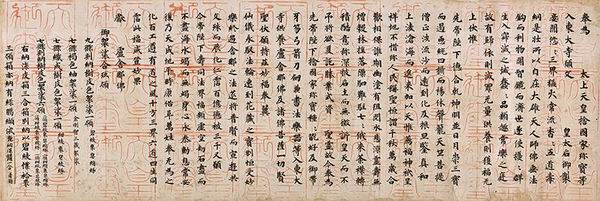
Todaiji Temple Offering Tent (Part)
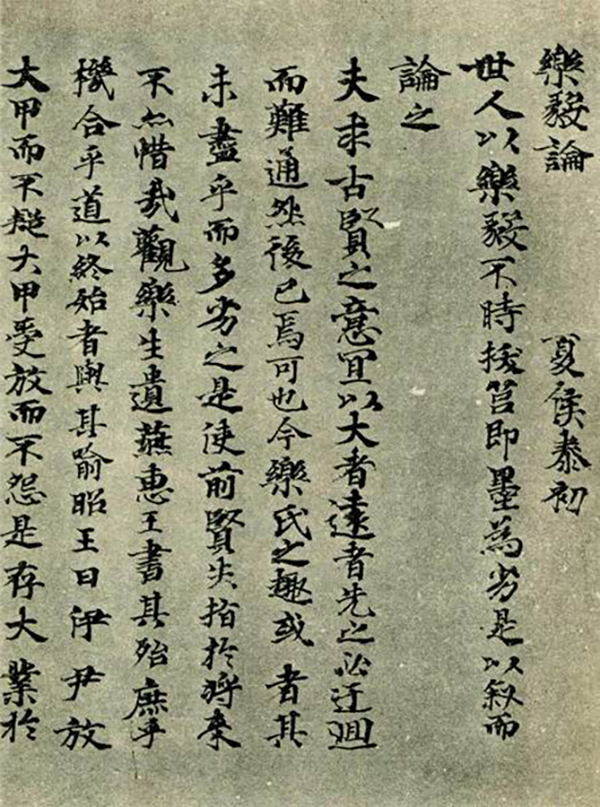
Empress Guangming's "Le Yi Lun"
In the era of Emperor Shengmu and Empress Guangming, China was in the middle of the Tang Dynasty. At that time, Japan and China actively communicated with each other, and the system, ideology, and culture were deeply influenced by the Sui and Tang Dynasties. Writing Chinese characters and learning Chinese became the cultivation of Japanese aristocrats. There are several volumes of Chinese calligraphy written by Emperor Shengwu and Empress Guangming in Zhengcangyuan. Among them, the volume of "Le Yi Lun" copied by Empress Guangming was written according to Wang Xizhi's calligraphy in the sixteenth year of Tianping (744). , Qi Gong's "Lunshu Quanju Qiwuyi" sentence "Xiaojuan Fujijia Lin Leyi, two lines at the end of the title sign the balance", it is the song of this work, and it is regarded as the Japanese calligraphy at that time. "example of. Since the era of the ancient emperor, Japan has had a system of sending "envoys to Sui" to China, and after China entered the Tang Dynasty, it was called "envoys to Tang". The existence of the system of "sending envoys from the Sui Dynasty" and "sending envoys to the Tang Dynasty" made it possible for Sui and Tang books and handicrafts to flow to Japan. After these messengers come to China, they will obtain Chinese books and handicrafts through trade and gifts. This snail red sandalwood five-string pipa has the aesthetic style of the Tang Dynasty as a whole, and the craftsmanship used exceeded the level of Japanese native craftsmanship at that time. The shellfish used for the snail inlay on the pipa came from the South China Sea. Therefore, it is generally believed that this pipa was obtained from China in the Tang Dynasty by an envoy sent to the Tang Dynasty, brought back to Japan, and presented to the emperor, thus being loved by Emperor Shengwu and Empress Guangming.
One more string is very important
This snailed red sandalwood five-string pipa, as the name suggests, has five strings. The pipa we are talking about today is usually played with four strings and four columns, and it is played vertically, which is very different from this pipa. The five strings, one more than the four strings, add a lot of mystery to the Luotian red sandalwood five-string pipa.
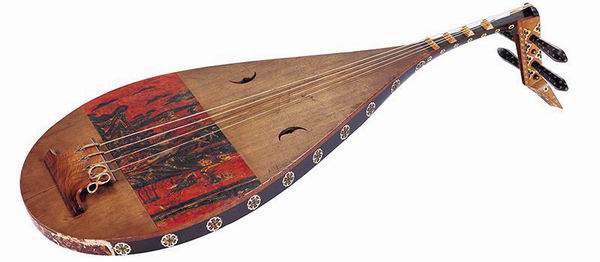
Red Sandalwood Painted Groove Pipa (Four Strings)
Along with this Luodian red sandalwood five-stringed pipa, there is also a Tang Dynasty pipa that was also collected by Zhengcangyuan. Although the red sandalwood painted groove pipa has four strings and four columns like today's pipa, only two columns can be seen in the frontal photo, because the neck of the pipa is bent like a right angle, so two columns are blocked. The shape of this pipa is also very different from the common pipa today, and it is usually called the four-stringed curved-neck pipa. Among the pipa collected in Zhengcangyuan, the Luodian red sandalwood five-string pipa is the only one with five-string pipa, and the rest are all four-string pipa.
An important music book in the Tang Dynasty was called "Le Yuan", which has long been lost, but the "Yuefu Poetry Collection" quoted some fragments from this book, including a description of the five-stringed pipa:
"The origin of the five strings is unknown, but the shape is like a pipa, with five strings separated by four, and one column.
This record talks about the strings, columns and notes of the five-stringed pipa. Using the five strings, you can play 26 kinds of sounds. The Japanese scholar Lin Qiansan believes that the "solitary column" should refer to the column used for the extra string of the five strings. It is relatively short and slanted in one corner. The five-stringed pipa in today's Zhengcangyuan is similar in shape to the five-column, which may have been repaired later. .
As we all know, although the pipa is a representative instrument of Chinese music, its prototype originated in the Western Regions. It can be said that the appearance of the pipa in Chinese music has a lot to do with the "Silk Road". The mainstream view is that the four-stringed lute was formed in West Asia, concentrated in Persia (now Iran). So, where did the five-stringed pipa come from? The "Tong Dian" says that "the five strings of Kuci's pipa" seem to be from Qiuci (that is, Kuci); the "Old Tang Book·Music Records" says that "from the Northern Kingdom of Gai", it is not very clear.
An earlier view holds that the five-stringed lute was developed in India. The main basis for this statement is the ancient artistic images of India, such as those carved in the reliefs of the Amarafudhi Pagoda in the 2nd century AD, and the images painted in the murals of Ajanta in the 7th century AD. Then, Indian art spread eastward along the North Road, passed through Central Asia, and was introduced to the Northern Dynasties around the later period of the Six Dynasties. Because the transmission route passed through the Qiuci area, the five-stringed pipa is also called the Qiuci pipa. This is similar to Arabic numerals, which were originally invented by the ancient Indians, but passed to Europe through the Arabs, so they are called Arabic numerals. This is the "India theory", advocated by Japanese scholars Omura Nishiya, Lin Qiansan, etc., and it is widely spread.
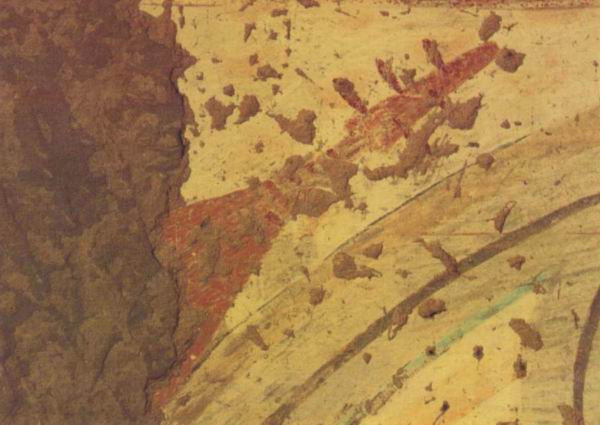
In the 1980s, Chinese scholars put forward a new theory based on the grotto fresco materials that had not been seen in the past, and believed that the five-stringed pipa, just like its other name "Qiuci pipa", was originally formed in the Qiuci area, and then spread westward by the Qiuci people. Entered India and spread eastward to the Central Plains. This kind of argument can be called "Kuizi theory". There are many cave sites in Xinjiang. The excavation time went through the historical periods of the Han, Jin, Northern and Southern Dynasties, Sui, Tang, Song, Yuan and other historical periods. Twenty-four musical instruments can be seen in the remaining murals, which are important historical music materials. The "five-stringed pipa", which is shaped like a rod, has a slender body, a straight neck and five strings, three columns on one side and two columns on the other side, appears many times in murals, such as Cave 14 and Cave 38 of Kizil, Cave 46 of Kumutura, etc. The grottoes where these murals are located are all early grottoes, which can prove that as early as the end of the Han Dynasty, this kind of pipa appeared in today's Xinjiang region.
The proposal of "Qiuzi theory" poses a great challenge to the traditional "India theory". The four-, five- and six-string lutes are depicted in the Indian Ajanta murals as the basis for the "India theory", which may not be a fixed form of the lute; other cave sculptures used as arguments for the "India theory", Although the grotto itself was excavated earlier, the sculpture with the image of the five-stringed pipa was created later, about the seventh century AD, later than the Xinjiang grotto murals. In addition, from the perspective of inheritance, today's plucked instruments of Ryukyu in Indian music have three, four, six, seven, eight, and nine strings, but there are no traces of five strings, but among the popular instruments in Xinjiang today , There are also five-stringed Rewapu (Rewapu), Boolean (plucker) and other Lute plucked instruments, from which we can see the rhythm of the five-stringed pipa. The scholar Chang Renxia mentioned that when he went to study in Ajanta, India, the guide pointed out that the murals contained the faces of people from western China (Kuchi people) and products from China. Therefore, scholar Zhou Jingbao believes that the five-stringed pipa represented in ancient Indian art was probably imported by Qiuci.
 渝公网安备 50010702504639号
渝公网安备 50010702504639号